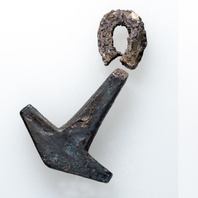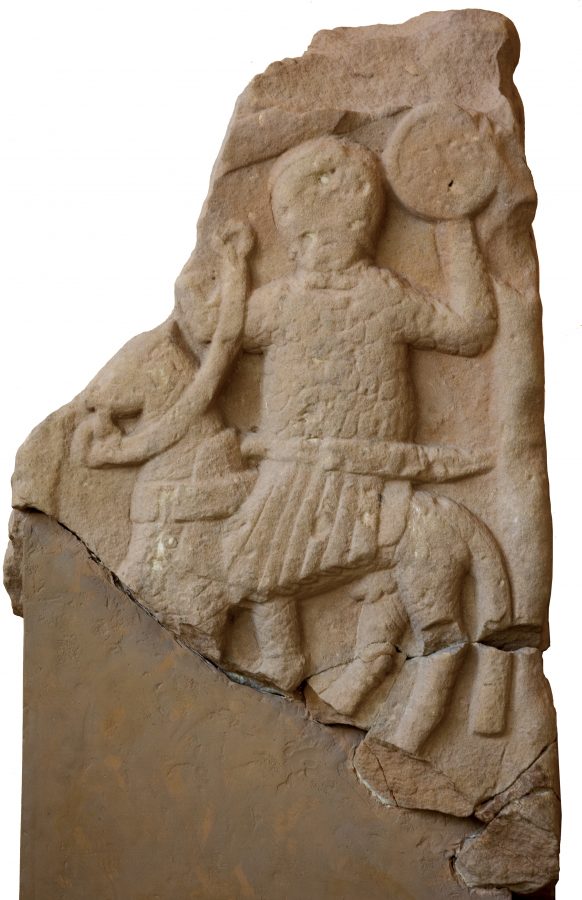
Description
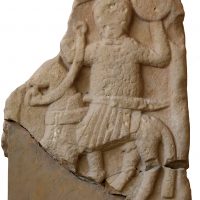
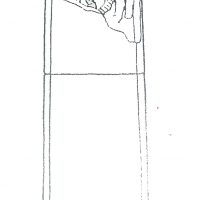
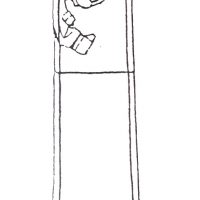
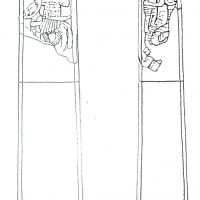
Repton Stone (1989-59/1165)
A piece of a cross-shaft found in Repton, Derbyshire
The Repton Stone, as it is now known, was found in a pit near the eastern window of the Church of St Wystan, Repton, Derbyshire in 1979. It was originally carved on all four faces, but recognisable detail remains only on two of them. The Repton Stone is a section of a sandstone cross shaft carved on one side with a mounted armed figure (Face A), on the other with a monstrous creature eating the heads of two people (Face B). It was broken
Face A: A moustachioed armed figure on horseback with sword and shield raised in the air is carved on this face. The horse is very clearly a stallion. Incised decoration, where the design is scratched into the surface, shows that the rider was depicted wearing armour and carrying a second weapon at his waist, perhaps a seax (knife or dagger). The armour was probably intended to be mail although the carving suggests scale. The mounted man appears to be wearing a diadem, suggesting that he was of high rank. He is wearing a pleated tunic under his armour, and has cross-gartered legs. The reins of the horse are looped over his right arm. Elements of the tack are clearly visible.
Face B: This face would have been on the side of the cross. The monstrous creature on this face consists of a snake-like body with the face of a human being. The serpent beast appears to be devouring the heads of the two human figures that embrace in front of it. The serpent may be a representation of the Hellmouth devouring souls.
The pit the stone was found in probably dates to the eleventh century or early twelfth century. However, the cross was probably much earlier in date, being broken up close to the time it was deposited in the pit. It is probable that the cross was made before the Viking camp in 873/4 because the monastery that stood on this site before the Vikings was not refounded after the Vikings adopted Christianity.
The presence of this cross at the site of a Viking camp shows that Repton was an important place before the Vikings made it their temporary abode. This may have been one reason that the Vikings chose Repton for one of their camps, although its proximity to the River Trent would also have been an important factor. The Vikings used waterways to access the interior of the country, so it is not surprising to find their winter camps beside navigable rivers.
Object Type
- Monumental cross
Date
- circa 700 — 873
Style
Ascribed Culture
Original/Reproduction
- Original
Material
Collection
- Viking Objects
Current Location
- Derby Museum and Art Gallery
Keywords
- Anglo-Scandinavian, Cross, Danelaw Saga, Derby_Museums, Derbyshire, Repton, sculpture, stone, Winter_camp
Further information
You can see the original at Derby Museum and Art Gallery.
This object is related to
Repton, Derbyshire.
Find out about Repton, Derbyshire.
Acknowledgements
(c) Derby Museums and Art Gallery
References
Biddle, Martin, and Birthe Kjølbye-Biddle. “The Repton Stone.” Anglo-Saxon England 14 (1985): 233-292.
Related items
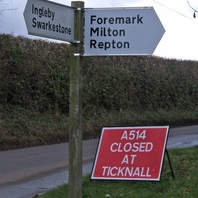
Repton
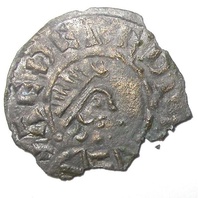
Coin of Aethelred (1989-58/3395)
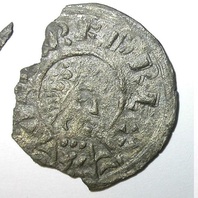
Coin of Alfred the Great (1989-58/3381)
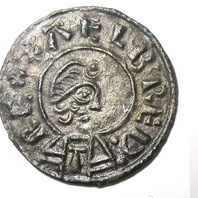
Coin of Alfred the Great (1989-58/3386)
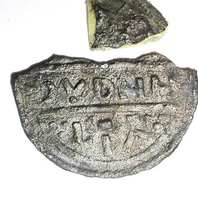
Coin of Burghred of Mercia (1989-58/3650)
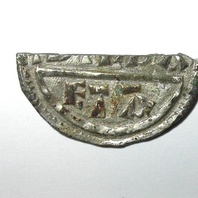
Coin of Burghred of Mercia (1989-58/3723)
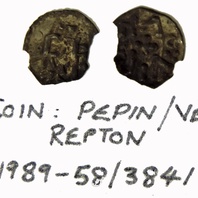
Coin of Pepin III (1989-58/3841)
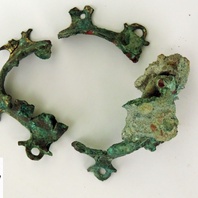
Gilded Mount (1989-59/7591)
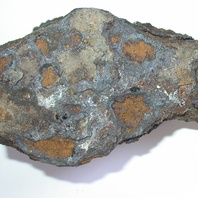
Iron Axe-head (1989-58/3296)
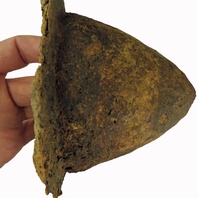
Shield Boss (1989-59/9013)
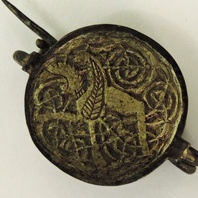
Silver Gilt Brooch (1989-58/7224)
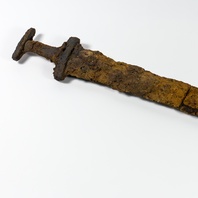
Sword (1989-59/7113)
